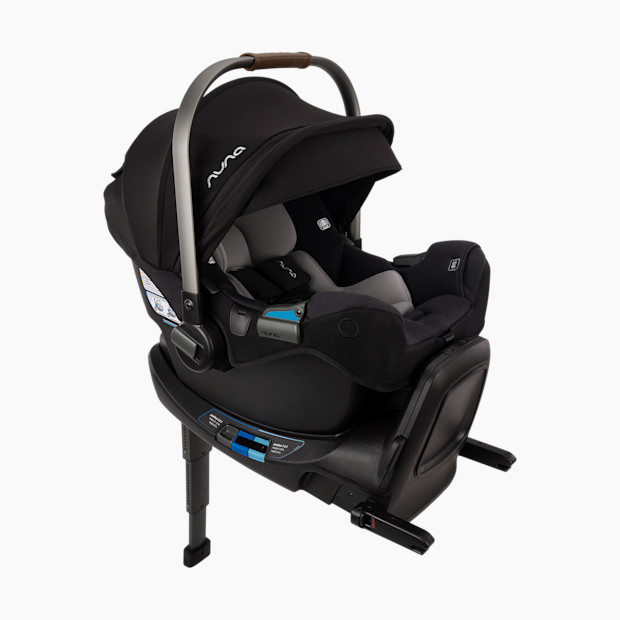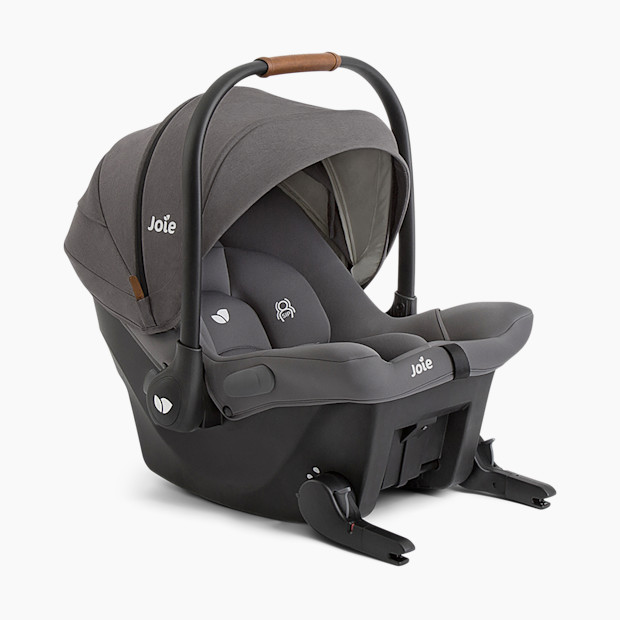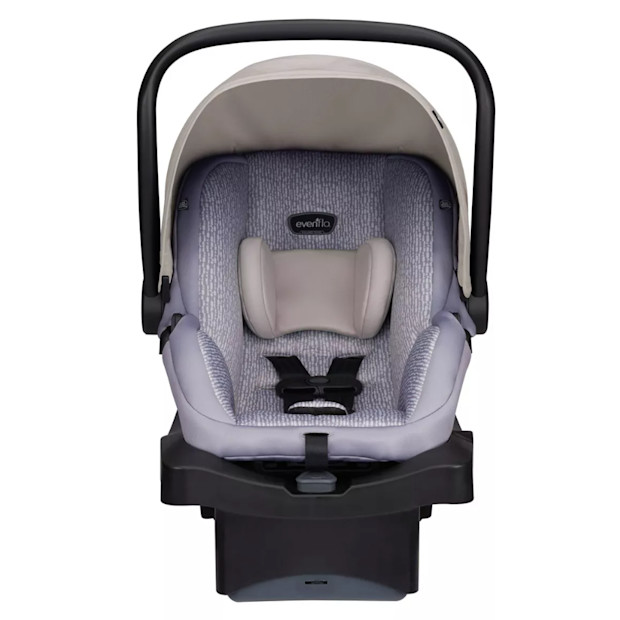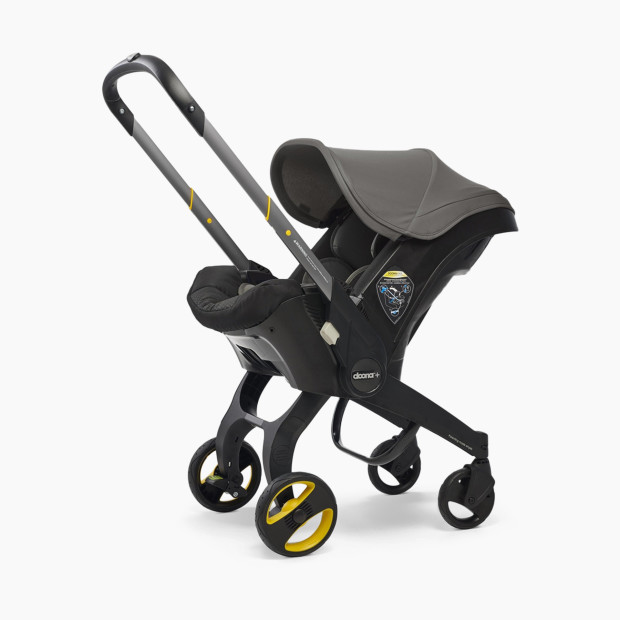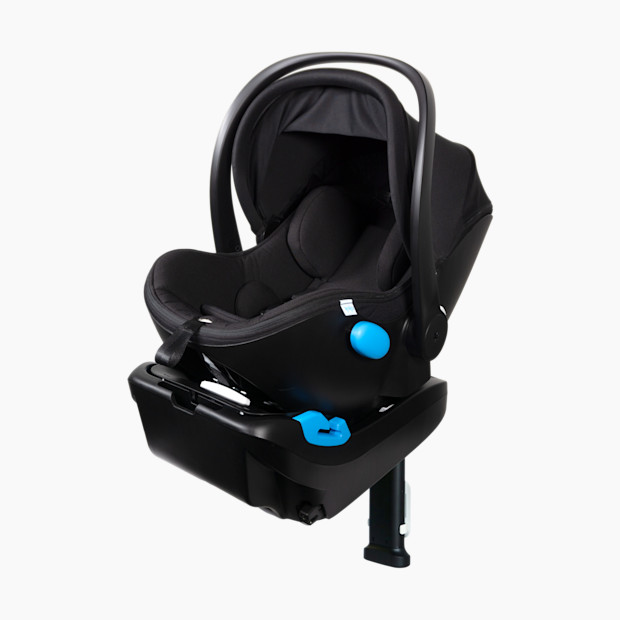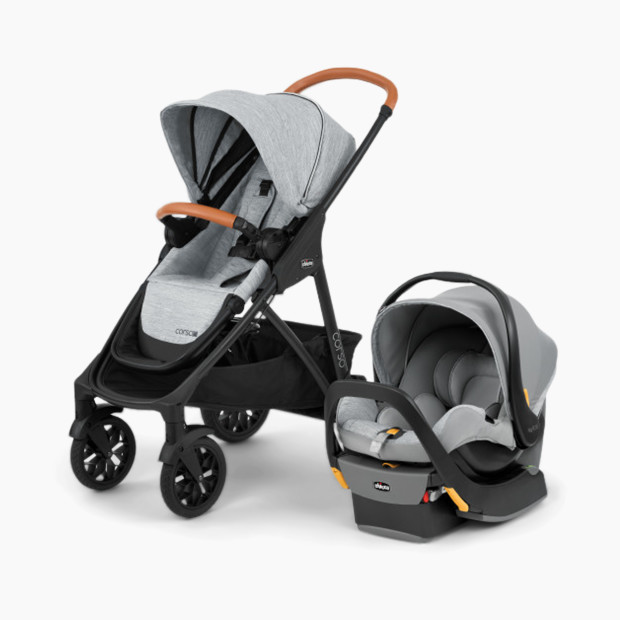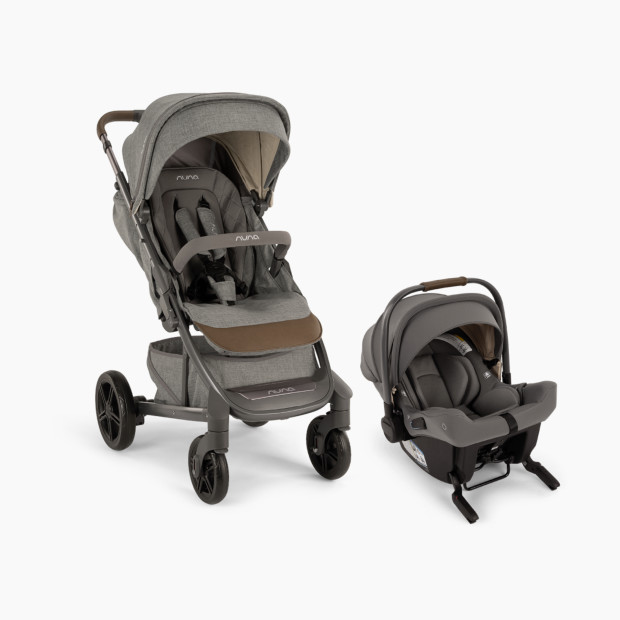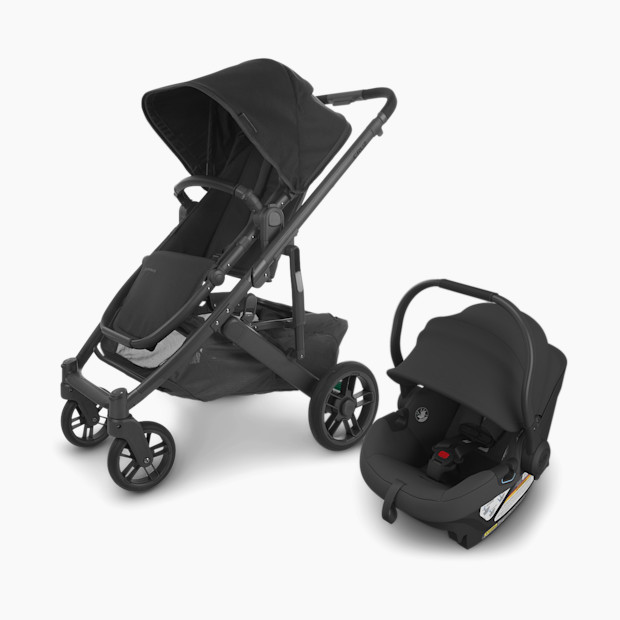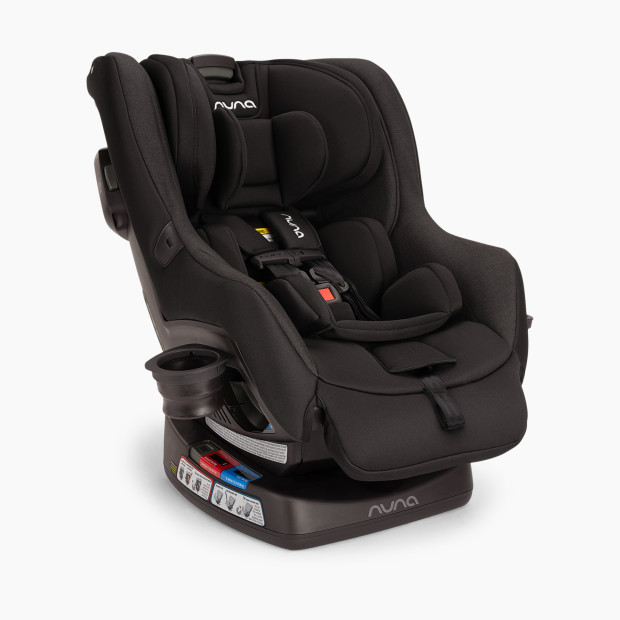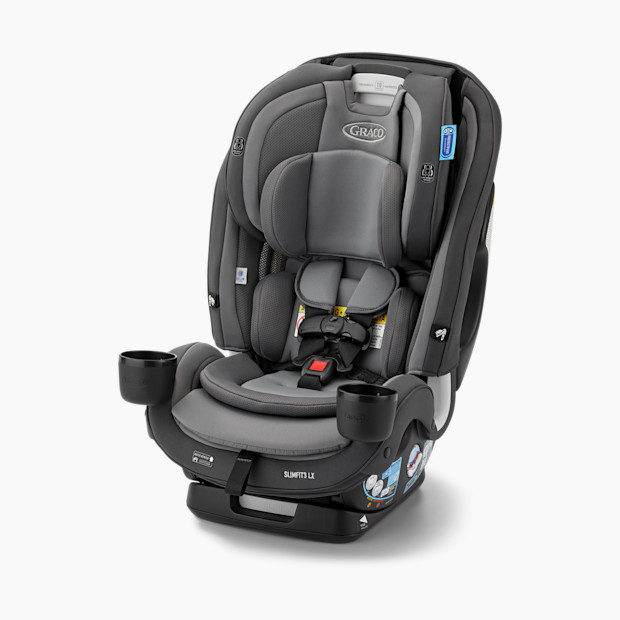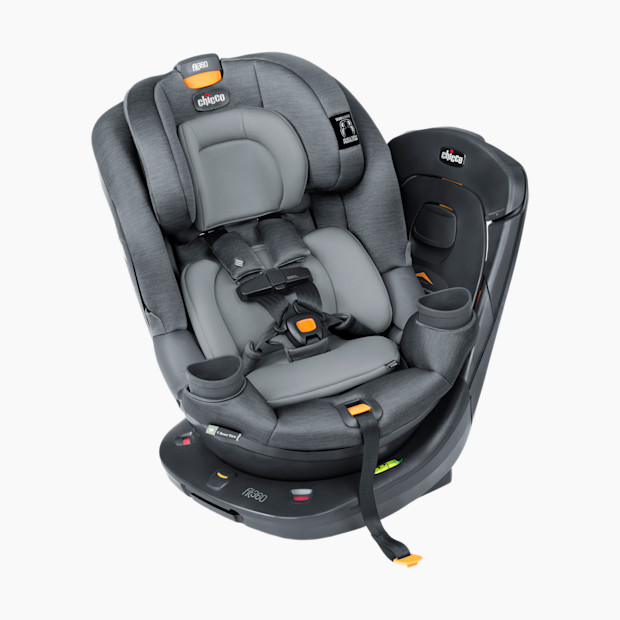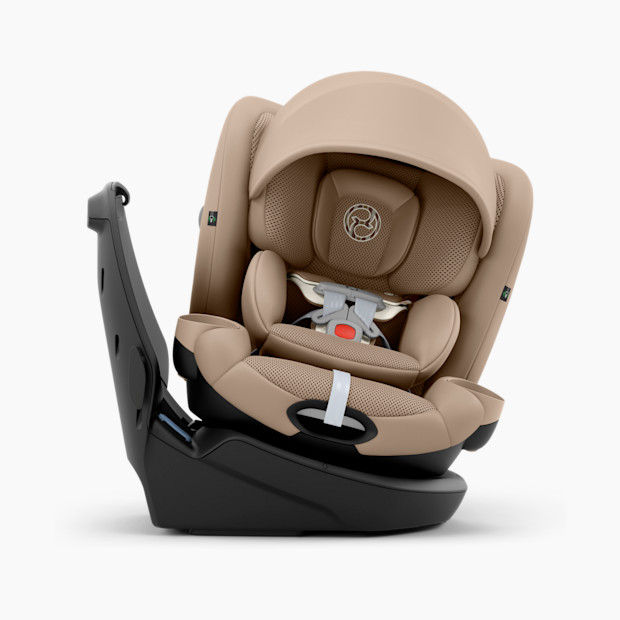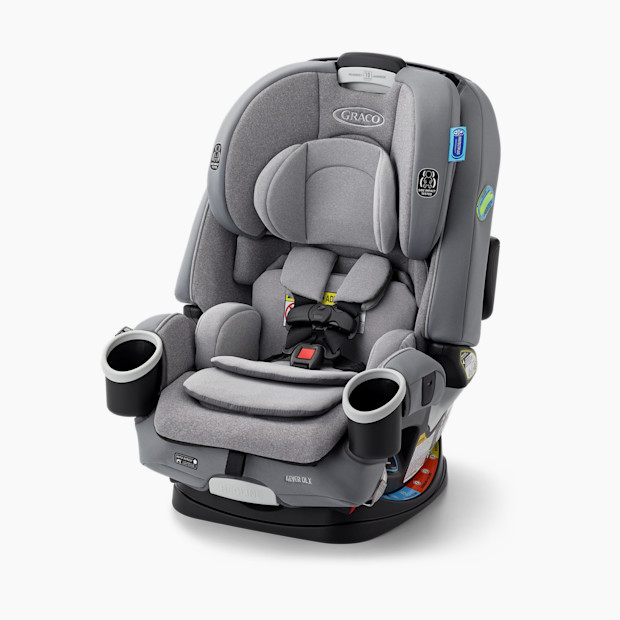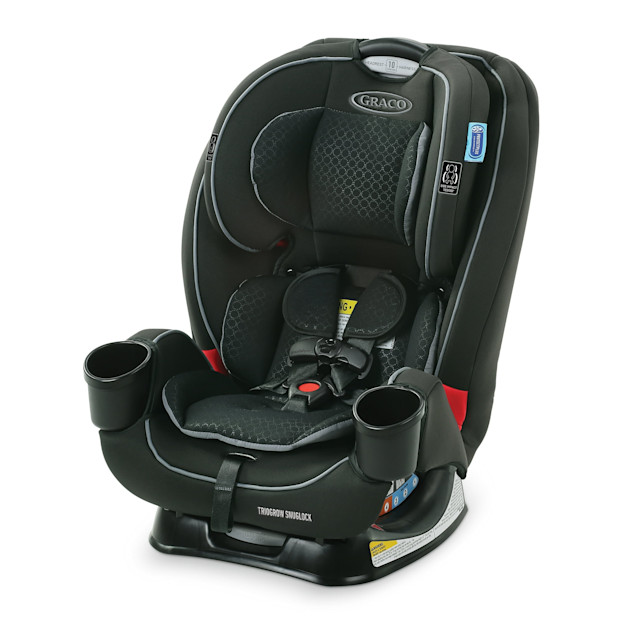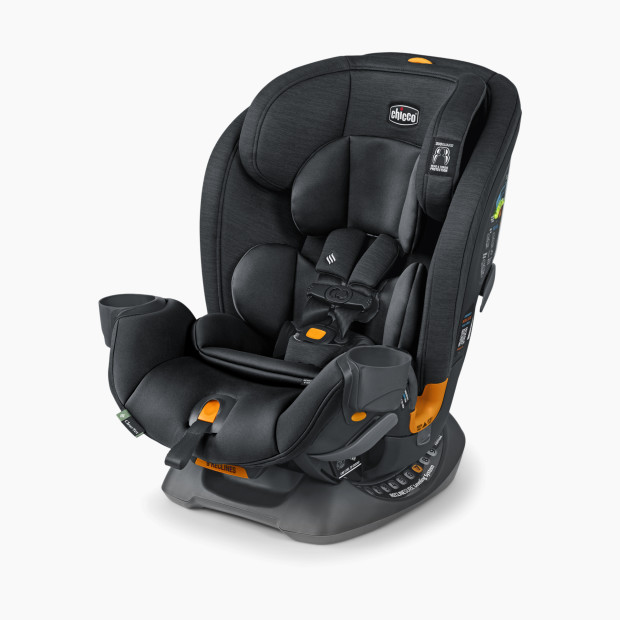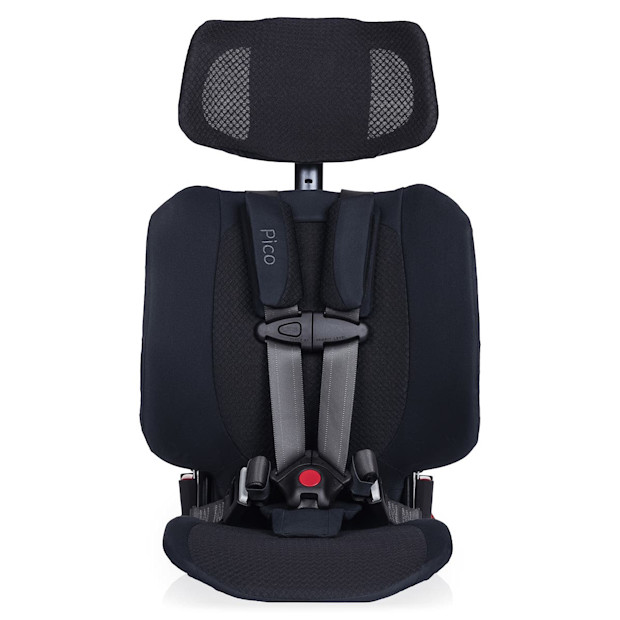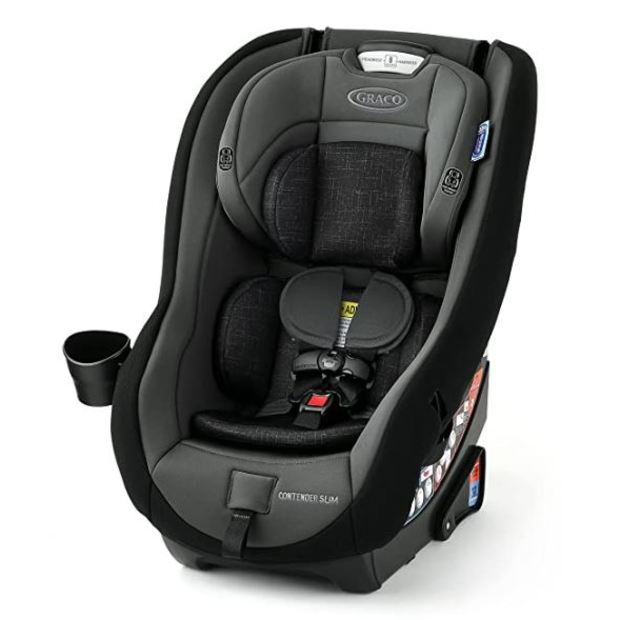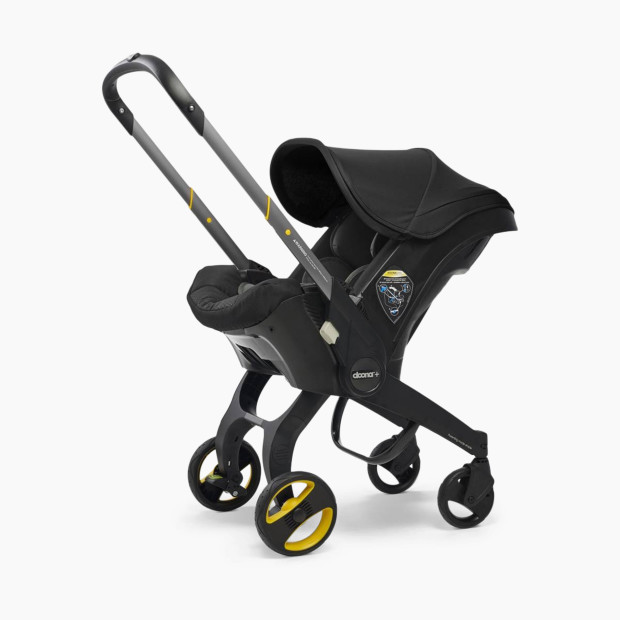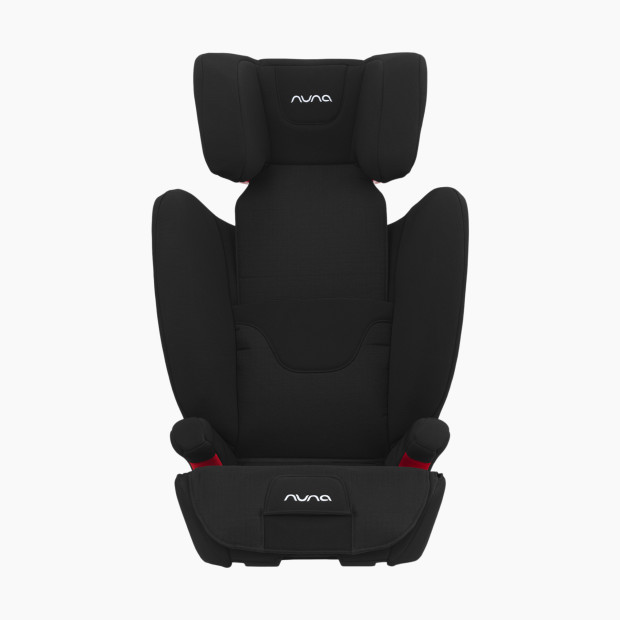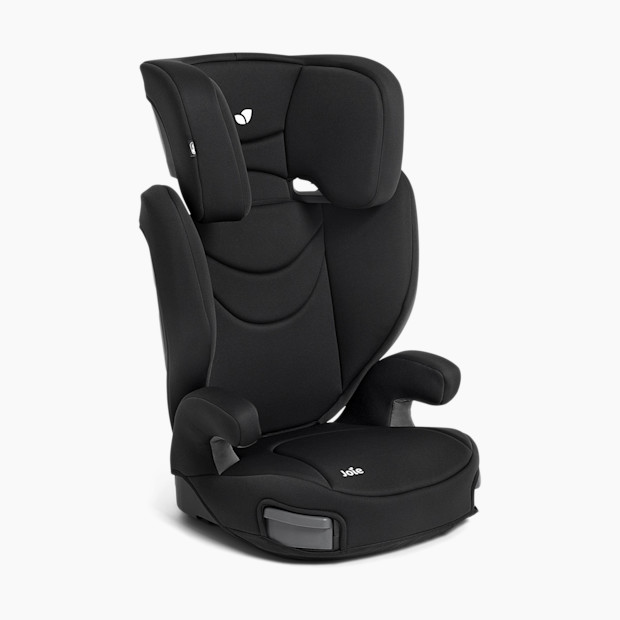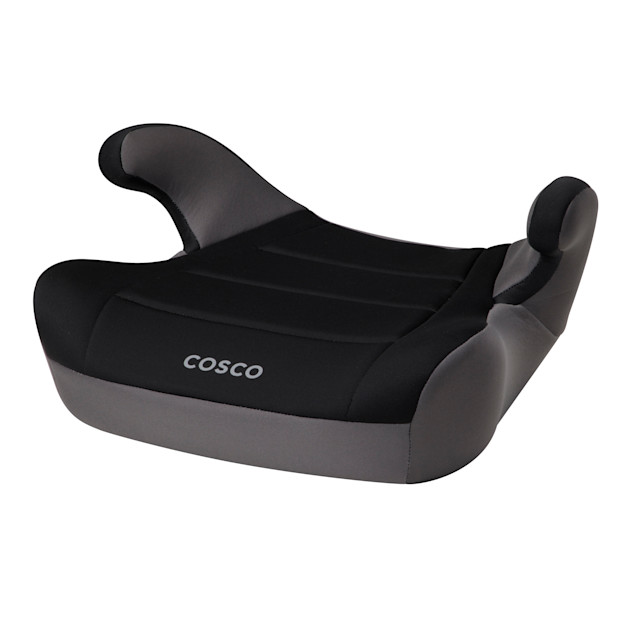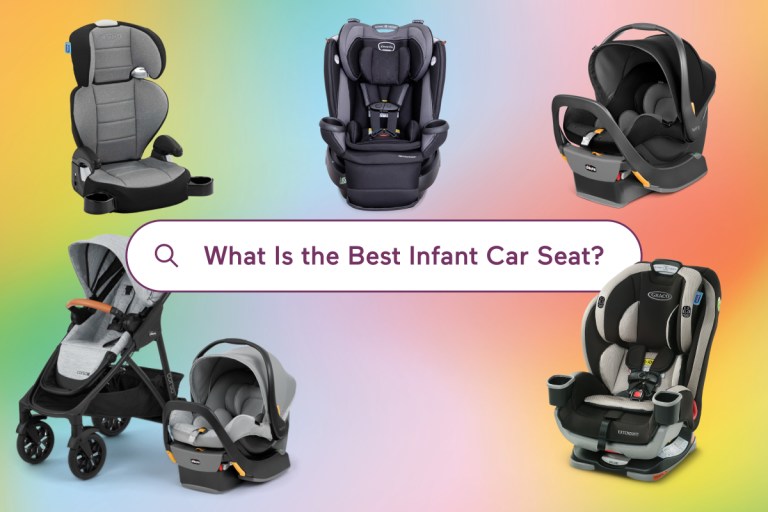
The Best Car Seats for Every Stage—and What New Parents Need to Know
Your car seat explainer: learn the different types of seats, what you’ll need when and browse our top picks.

In This Article
Whether you’re a first-time parent researching the best infant car seat to add to your baby registry or a seasoned mom shopping for the safest booster seat for your second grader, car seats can feel intimidating—and for good reason. There are technical terms to learn. Knowing which seat to use when is confusing, and wading through the many car seats on the market is daunting. As a Child Passenger Safety Technician myself—a CPST, someone who's specially trained in car seat usage and education—even I can feel overwhelmed at times.
"Car seats are often one of the most intimidating items to research," says Rebekah Kimminau, a CPST and founder of The Baby Gear Consultant. "Even once you are a parent and have experience using car seats, they can continue to feel overwhelming to purchase and install," she says.
But car seats are going to be a part of your life for at least the next decade, so learning the ins and outs is worthwhile. Bookmark this guide as the first stop every time you need to choose a car seat. We’re walking you through everything you need to know: the different types of seats, from infant car seats all the way through boosters; how to know which seat to use when and when to make the switch; and our picks for the best car seats in each category.
Why Trust Babylist?
Babylist is the expert in baby; we know baby gear inside and out. We talk with parents face-to-face in our showroom and on our user panels and hear from thousands annually via our Best Baby Products online survey. We know what items millions of expecting parents are adding to their baby registries.
Firsthand professional and personal experience. As a CPST, I’m specially trained in car seat installation, usage, safety and education. I'm also Babylist's gear editor; I've been writing about car seats since 2019 and have personally tested and reviewed dozens of seats. And I’m a mom of two boys, ages three and ten—so I have over a decade of experience with all types of child restraint systems.
Car seat data. I regularly analyze which baby products our users are adding to their baby registries the most (and which ones they aren’t) and what our team of Merchandising experts—our buyers who are responsible for ensuring the Babylist Shop is stocked with the best and newest gear—is excited about.
Feedback and reviews. I review comments and feedback from Babylist’s annual product survey of thousands of parents, read customer reviews from hundreds of Babylist users and speak to parents on our staff about their real-life experiences with infant car seats, convertible car seats and boosters.
👶🏽 Best Infant Car Seat
An infant car seat is a rear-facing car seat made specifically for younger babies.
Infant car seats can be used from birth until your baby reaches the seat’s height or weight maximum. For most seats, these top limits are around 30-32 inches for height or 30 pounds for weight, whichever your child hits first. You'll also need to pay attention to your child's torso height, as many seats require a child's head to be at least one inch from the top of the seat's shell.
What else you need to know:
Infant car seats always face the rear of a vehicle.
Most infant car seats attach to a base. The base stays installed in your vehicle, and the seat clicks in and out of it. Infant seats can also be used without a base using your vehicle's seat belt or LATCH system.
It's possible to skip an infant seat and use a convertible car seat from birth; however, you’ll lose the ability to transfer your baby in and out of your car or stroller while still in their car seat. Convertible seats are also large and heavy, and you'll need one for each vehicle you own.
Chicco KeyFit Max ClearTex Infant Car Seat - Legend
From $249.99From ease of install and excellent safety features to its slim profile and extended rear-facing limits, I can’t say enough good things about the Chicco KeyFit Max. And it’s not just my top pick; it’s also a parent and car seat safety expert favorite. (The parents we spoke to highlighted how easy it was to install and that it was lighter than many other infant car seats they’ve tried.) It’s a well-priced seat that includes both safety extras like an anti-rebound bar (to prevent extra movement in the event of a crash), flame retardant-free materials and GREENGUARD Gold Certification and convenience features like a no-rethread harness (so you can adjust the straps without having to undo and reroute them).
Did you know you can buy infant car seats from the Babylist Shop? And for more information on infant car seats including infant car seat terminology, understanding safety features, how to choose the best infant car seat for you and our full list of top picks, visit the Best Infant Car Seats guide.
Other Infant Car Seats We Love
🚶♀️Best Car Seat Stroller Combo
A car seat stroller combo, also called a travel system, is an infant car seat and a stroller that attach.
A travel system is designed for use from birth. It lets you stroll with your newborn before they can sit up on their own—and makes car-seat-to-stroller transfers (and back again) a lot easier.
What else you need to know:
A travel system solves for strolling with your newborn before they’re able to sit up on their own. It also means you don’t have to disturb your little one every time you need to switch between your car seat and your stroller.
Travel systems can be purchased in two ways: as a package deal from the same brand or as a “make your own” set that combines a stroller and a car seat from different brands using adapters.
Chicco Corso LE Modular Travel System - Veranda
From $659.99Most car seat stroller combos offer value, but not all offer quality. This one from Chicco delivers on all fronts and is an excellent combination of price, features and performance. Also called a travel system, this car seat and stroller combo includes my top infant car seat pick (and popular parent favorite), the KeyFit, alongside a stroller with high-end features like foam-filled tires, a suspension system, a huge storage basket and a multi-position reclining seat. And while not inexpensive, it offers incredible value for the quality.
You can buy a travel system from the Babylist Shop and learn more about how to choose a car seat stroller combo, what features to prioritize and find other top picks in the Best Travel Systems guide.
Other Travel Systems We Love
🚘 Best Convertible Car Seat
A convertible car seat is a car seat that can be used with children of various sizes and can change from a rear- to a forward-facing seat. Convertible car seats don’t have bases like infant seats; instead, they use your vehicle’s seat belt or LATCH system for installation.
You can use a convertible car seat from birth until the preschool years and beyond.
What else you need to know:
Convertible car seats are heavy and bulky. They’re designed to be installed in your vehicle and stay there, unlike infant car seats, which are much more portable.
You should keep your child rear-facing in a convertible car seat until they reach the top height or weight limit allowed by the seat's manufacturer. Once you make the switch to forward-facing, follow the same guidelines—use your convertible seat until your child outgrows its forward-facing limits.
Graco Extend2Fit 3-in-1 Car Seat - Ashten
From $279.99I’m partial to any car seat that allows for extended rear-facing (the safest way for your little one to ride)—and this seat from Graco is designed with this safety feature specifically in mind. (Many parents choose this seat for exactly this reason.) It fits well in almost any type of car, even smaller vehicles, and is affordable and easy to install. It also converts to a high-back booster for years of use.
You can buy convertible car seats from the Babylist Shop or head to our Best Convertible Car Seats guide for more best-of picks plus information on extended rear-facing, features to look for in a convertible seat and convertible car seat FAQs. Let Us Help You Pick Your Next Car Seat is another good resource to consult when it’s time to make the switch.
🔁 Best Rotating Car Seat
A rotating car seat is a type of convertible car seat that spins on its base either 180 or 360 degrees.
Rotating car seats can be used from birth until your child reaches the maximum height or weight limits allowed by your particular seat. Most rotating seats will last you into the preschool years, and some even longer.
What else you need to know:
Rotating car seats make it easier to get your little one in and out of the car, especially when they’re rear-facing. They're also a good solution for parents and caregivers with certain physical disabilities.
Rotating seats also make it easier to rear-face your child—and when something is easier, you’re more likely to do it.
Rotating car seats are safe, but you need to be sure you’re using them properly. Always be sure the seat is in the locked position (either forward- or rear-facing) when driving, and never let your child ride in the seat in an unlocked position.
Evenflo Revolve360 Extend All-in-One Rotational Car Seat with Quick Clean Cover - Revere Gray
From $339.99This rotating car seat is easy to install, packed with safety features and can be used for many years. I like the high rear-facing weight limit (50 pounds) and the smooth rotation, and that the cover is easy to remove and wash. It's a good value, especially compared to many other rotating seats, and you only need to install it once if you use the seat belt installation method.
If you think a rotating car seat might be right for you, you can learn more about these innovative seats and see our full list of top picks in the Best Rotating Car Seats guide or buy a rotating car seat from the Babylist Shop.
1️⃣ Best All-in-One Car Seat
An all-in-one car seat is designed to work from infancy through the elementary school years. All-in-one seats transform from rear-facing seats to forward-facing ones and then ultimately to booster seats.
You can use an all-in-one car seat from birth until your child reaches the top height or weight limits allowed by your particular seat. Most all-in-one car seats will last into the elementary school years.
What else you need to know:
Some all-in-one car seats convert to both a high-back booster (a seat with a bottom and a back) and a backless booster (a seat with just a bottom), while other models end up only as high-back booster seats.
Graco 4Ever DLX 4-in-1 Car Seat - Charlie
From $329.99Many all-in-ones don't fit smaller babies well and fall short as your little kid turns into a big kid—but the Graco 4Ever is a nice exception. It's easy to install, moderately priced and fits both younger and older children. It also features a RapitRemove cover for easy cleaning, an important feature for a car seat you plan to use for the long haul.
Babylist’s Best All-in-One Car Seats guide walks you through everything you need to know about all-in-one seats plus our other best-of recommendations. You can also buy an all-in-one car seat from the Babylist Shop.
Other All-in-One Car Seats We Love
✈️ Best Travel Car Seat
There’s no true travel car seat category; instead, what defines a travel-friendly seat is its features. Things like a lighter weight, compact design and ease of portability are all factors to consider when you’re shopping for this type of seat.
Most parents use their everyday infant car seat if they’re traveling with a younger baby. But once your little one outgrows their infant seat, you may want a travel-specific convertible car seat since many other convertibles are large and heavy.
What else you need to know:
Your lifestyle should determine whether you need a travel car seat. If you travel frequently by air, it's often a worthwhile investment, since traditional convertibles are heavy and cumbersome.
Weight and ease of installation are the two biggest features to look for in a travel car seat. You’ll also want to be sure your seat is FAA-approved if you’re planning to take it on an airplane.
A travel-friendly car seat is also great for rideshares or for grandparents' or caregivers' cars.
“One of the lightest convertible car seats on the market,” according to Kimminau, the Cosco Scenera has been my go-to travel car seat for over a decade. Weighing in at only 10 pounds, it's easy to sling over your shoulder while you’re walking through the airport or install in an airplane seat or a rideshare. It’s no-frills and takes a little practice to get a secure install, but it’s slim, safe and extremely affordable. Just note that it does have lower weight and height limits, so it won’t last your child as long as most convertible car seats.
Before you head off on your next trip, consult our Best Car Seats for Travel guide for our other top travel-friendly car seat picks and more tips on how to choose a travel car seat.
Other Travel Car Seats We Love
🧒 Best Booster Seat
A booster seat uses a vehicle’s seat belt as a restraint. Think of a booster as the step between a car seat and a seat belt; it elevates a child in a car’s seat, making adult seat belts fit better on little bodies.
Don't make the switch to a booster too soon. First, max out the top limits of your forward-facing convertible car seat. Then be sure your child is mature enough to sit correctly in a booster seat for the entirety of every car ride: no slouching, leaning, etc. Most kids aren’t mature enough to sit properly in a booster until at least five years old; most hit this milestone sometime between five and seven.
What else you need to know:
There are two types of booster seats: high-back and backless boosters. High-back boosters have a back, while backless boosters do not. High-back boosters better position a child's body and the vehicle's seat belt, so use one for as long as possible before making the jump to backless.
The AAP recommends that children remain in a booster seat until the adult seat belt fits properly—usually around when a child reaches four feet nine inches and is between eight and 12 years old.
If your child has outgrown their forward-facing car seat but isn't quite ready for a high-back booster, a combination car seat is a good next step. Combination car seats have a forward-facing harness mode and then transition to a booster mode.
Budget-friendly, light and easy to install, this high-back booster fits a wide variety of children well and transitions to a backless booster for years of use. It also has LATCH straps to secure it to the seat, which keeps the seat from sliding around when it isn't in use. It’s the booster I come back to again and again even after trying more elaborate, more expensive models. The seat also has cupholders and height-adjustable armrests.
Buy booster seats from the Babylist Shop or learn more about how to know when it’s time to transition your child to a booster seat and what other picks topped our list in the Best Booster Seats guide.
Other Booster Seats and Combination Car Seats We Love
How to Choose a Car Seat
A car seat is a registry must-have if you’re looking to take anything from a road trip to a ride to the grocery store. But choosing one is a big decision. Here’s what you need to know.
1. Choose the proper type of car seat
There are five main types of car seats: infant car seats, convertible car seats, combination car seats, all-in-one car seats and booster seats.
An infant car seat is a rear-facing seat designed for use by an infant or young child.
A convertible car seat can be used from birth and has both rear- and forward-facing capabilities. Some convertible car seats have rotating capabilities.
A combination car seat is designed for an older child and has a forward-facing harnessed mode and a booster mode.
An all-in-one car seat can be used rear-facing, forward-facing and in booster mode. It can be used from infancy through elementary school. Some all-in-one car seats rotate.
A booster seat is designed for use by an older child and is used with a vehicle's lap-and-shoulder belt.
Your child’s age, weight, height and developmental level all factor into determining which car seat you should choose. It's also important to choose a car seat that fits in your vehicle and that you and other caretakers can use correctly.
The safest car seat is one that fits your child, fits your vehicle and can be installed and used properly every time.
To maximize safety, keep your child in each car seat stage as long as possible, until they outgrow the seat by either the manufacturer's height or weight limits.
It's also important to know that not all car seats fit in all cars.
Whenever possible, try out a car seat in your vehicle before purchasing it.
Reach out to a CPST with vehicle- and seat-specific questions.
Join a CPST-staffed online car seat safety group, like Car Seats for the Littles, for answers to specific car seat and vehicle questions.
2. Learn car seat safety terms
You're going to encounter a lot of car seat terminology as you research seats. Here are some key terms and safety features to know.
Five-point harness. This type of harness consists of two shoulder straps, two waist straps and a crotch strap that all meet in a middle buckle. Five-point harnesses help secure a child in a car seat and spread crash forces over the body.
LATCH. LATCH stands for Lower Anchors and Tethers for CHildren. It’s a system of built-in straps and hooks on a car seat and anchor hardware in your vehicle designed to make car seat installation safer and simpler. Keep in mind that you can only use it up to a certain weight limit (check your instruction manual for the specifics for your seat) and in certain locations in a vehicle.
Extended rear-facing. Many car seats call out extended rear-facing capabilities, which means the seat has a higher-than-average rear-facing height and/or weight limit. Riding rear-facing protects the most vulnerable parts of a child's body: their head, neck and spine. Rear-facing car seats should be used from birth until a child reaches the highest weight or height limit of the car seat as labeled for rear-facing.
Anti-rebound bar/panel and load leg. These are two safety features found on some car seats. An anti-rebound bar/panel reduces the movement of a car seat in a crash, halting the seat’s rebound so it can come to a stop sooner. A load leg (also called a stability leg) helps to reduce the amount of force on a car seat and also reduces the rebound of a seat in the event of a crash. A good rule of thumb to remember is that the less a car seat moves during a crash, the better, so these are safety features that some parents prioritize when shopping for a car seat.
3. Learn about car seat features
There isn’t a magic feature that makes one car seat easier to use than another; however, certain features can make both installing and using your seat easier.
Ease of installation. Infant car seats can be installed with or without a base and can use either your vehicle’s seat belt or LATCH system. Think about how often you'll be installing and uninstalling your seat, if you own a vehicle or use rideshares and if you plan to travel with your seat when evaluating how important an easy-to-install seat is to you—or isn't.
Ease of adjustment and use. Part of car seat safety is making sure the harness fits your baby’s body just right for every ride. Although all safety seat harnesses adjust, be sure the adjustments are easy to reach and simple to use. Some parents prefer a no-rethread harness over a rethread harness since you don't have to manually adjust the harness straps as baby grows.
Ease of cleaning. Car seats get messy, but each seat has specific instructions for proper cleaning. If you're concerned about messes, opt for a seat with a removable, machine-washable cover. (How to Clean a Car Seat outlines why it's so important to clean your seat according to the manufacturer's directions—and how to do it.)
4. Read your manuals
Once you've purchased a car seat, read your car seat manual—and then read it again. Car seat manuals are the best source of information about how to use your car seat safely and can help you avoid common car seat installation mistakes.
You'll also need to read your vehicle owner's manual. It has rules about how and where car seats can be installed. Car seat information is most often in a specific section labeled “child restraints” or “child restraint systems.”
Frequently Asked Questions
Is it safe to buy a used car seat?
If possible, avoid used car seats. Used car seats may be damaged and may not meet current safety regulations. If you do decide to buy used, buy from someone you trust so you know the seat’s history. Look up the seat’s expiration date and research if that particular car seat model has ever been recalled. And be sure to follow the manufacturer’s rules around how to clean it safely.
Should I get an infant car seat or a convertible?
While many convertible car seats will work for your little one from birth, most parents decide to start with an infant car seat first. (Eighty percent of Babylist parents register for an infant seat.)
Babies under six months can’t sit up on their own, and not all strollers have the ability to fully recline the seat. If you want to stroll with a newborn, many strollers require an infant car seat.
Many convertible car seats don't provide a good fit for newborns or smaller babies.
The ability to pop your infant seat out of your car and either carry it or clip it directly into your stroller means you don't have to disturb your baby every time you use your car.
Although infant car seats do click into bases, you can also install them using just a seat belt, making them easier to use in rideshares or rental cars.
You can store your infant seat indoors during really hot or cold weather so it’s always at a comfortable temperature and never exposed to the elements in your car.
Some parents choose to skip an infant car seat and use a convertible from day one. It’s usually because they’re planning on babywearing often, want to save money by skipping the infant seat or are looking to limit the number of baby products they purchase.
How do I know if my car seat is installed tightly enough?
When installed correctly, a car seat should not move more than one inch side-to-side or front-to-back. You can test this by using moderate force at the seat’s belt path to move the car seat from left to right and front to back.
One of the most common mistakes parents make when checking the tightness of their car seat is testing it in places other than the belt path, like the top of the seat or near the footrest area. If you pull back and forth on a car seat at the top, for example, it will likely move much more than an inch, giving you the (incorrect) impression that the seat isn’t tight enough. Don’t do this! Test for movement at the belt path only.


